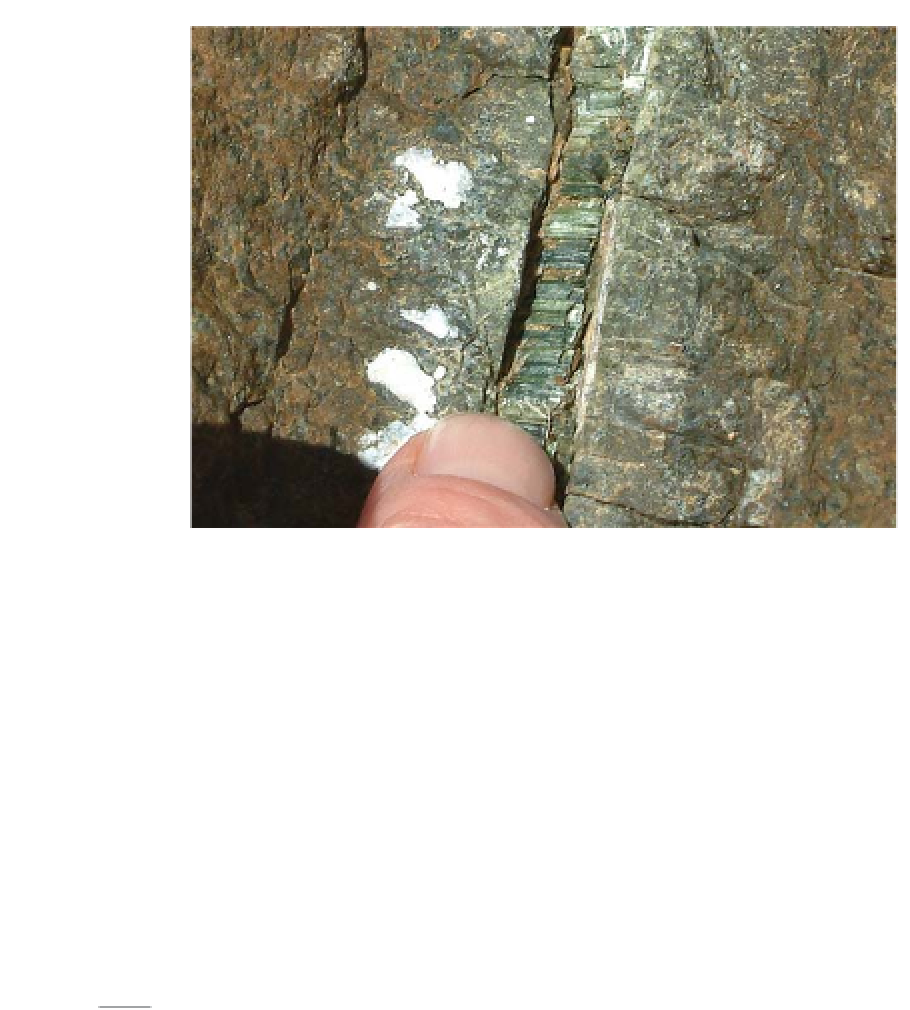Geology Reference
In-Depth Information
Figure 8.2
Fibres of serpentine/asbestos in serpentinite (altered peridotite) from
Cyprus.
the rock, then one or more of olivine, clinopyroxene and orthopyroxene may
become major constituents, and this leads to the discrimination of peridotites
(
>
40% olivine), pyroxenites (
>
60% pyroxene) and the other less common
varieties shown in Figure 3.14.
In general,
peridotite
is usually a mid-green to black, medium or
coarse-grained rock-type when fresh (buff brown when weathered), though
the olivine in many examples has become altered to the dull, light-green
colour of serpentinite (a soft, fibrous, hydrated magnesium silicate, Figure 8.2).
Serpentinisation is also common in
dunite
, a medium- to coarse-grained rock
almost entirely made (
90%) of olivine which, when fresh, may have a 'sugary'
texture.
Pyroxenites
have less tendency to alteration and are usually black or
greenish-black in colour, though abundant orthopyroxene may have a bronze
colouration (
Bronzite
). Distinctive accessory minerals, particularly in continental
ultramafic bodies and kimberlite xenoliths (Chapter 6), include occasional shiny
grains of
phlogopite mica
and less commonly Fe-Ti oxide mineral grains such
as ilmenite, magnetite and chromite (Table 3.4) which form small black granular
clusters. A rare, but economically important and easily identified rock type,
chromitite
(see Section 10.2), occurs as layers in ultramafic intrusions. This is
a heavy medium grained melanocratic granular rock in which black, euhedral
chromite grains are enclosed in a matrix of clinopyroxene and/or olivine.
>
















